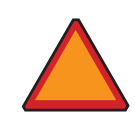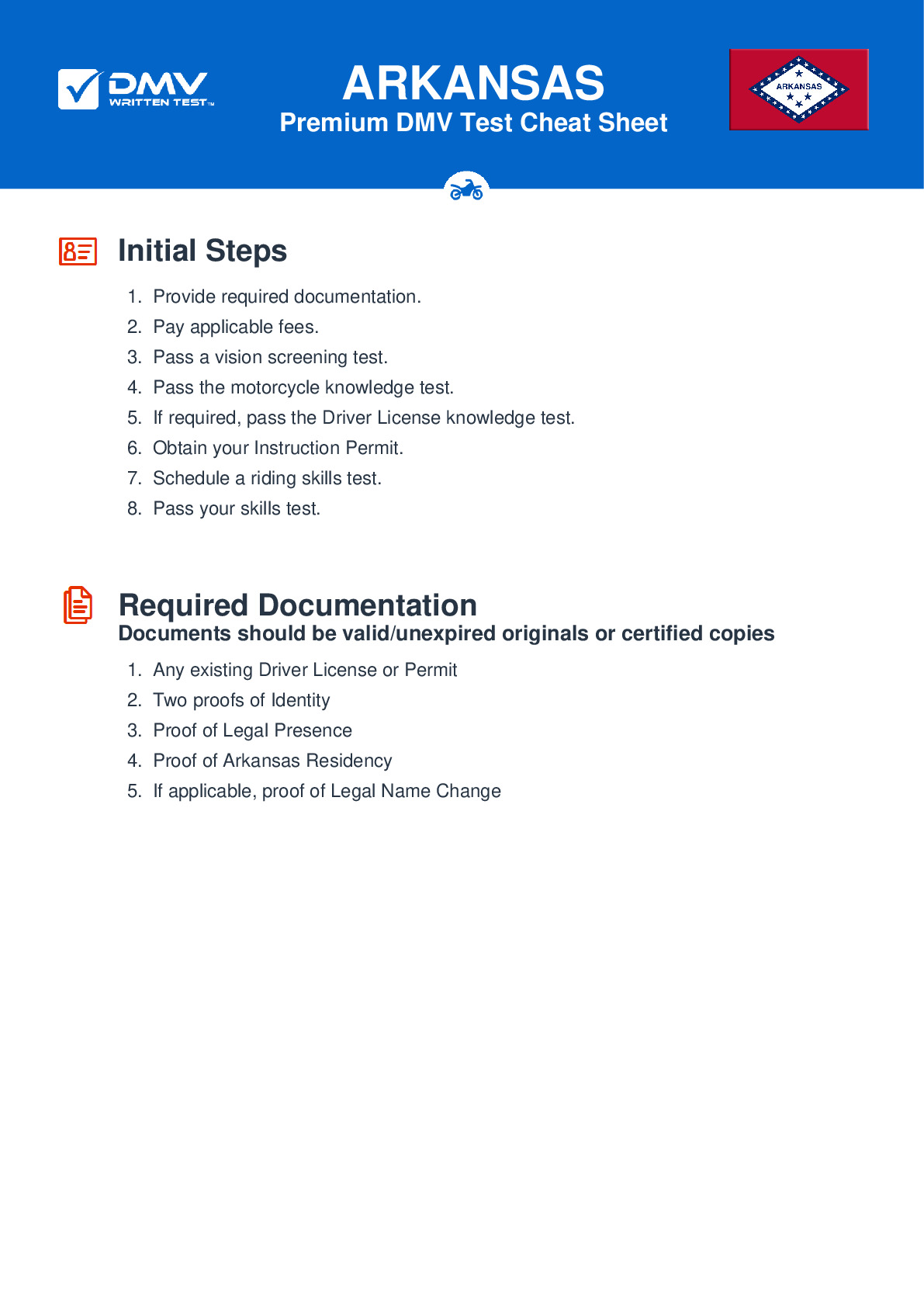2025 Arkansas Motorcycle Permit Test 7
The following questions are from real DMV written motorcycle permit tests. These are some of the actual permit questions you will face in Arkansas when getting your motorcycle learners permit. Each motorcycle theory practice test question has three answer choices. Select one answer for each question and select "grade this section." You can find this button at the bottom of the drivers license quiz. For a complete list of questions and answers for Arkansas please visit https://cheat-sheets.dmv-written-test.com/en/arkansas/motorcycle.
Number of Tests
Number of Question
Passing Score
1. Unlike other beverages, alcohol:
Explanation
Unlike other substances in food and drink, alcohol does not need to be digested. It is absorbed directly through the walls of the stomach and small intestine, enters the bloodstream, and quickly reaches the brain.
2. To be effective, eye or face shield protection must:
Explanation
To be effective, an eye or face shield must be free of scratches; be resistant to penetration; allow clear views to both sides; fasten securely; permit air to pass through to prevent fogging; and allow room for eyeglasses or sunglasses, if needed.
3. When passing a row of parked vehicles, a motorcycle rider has an advantage over an automobile driver because:
Explanation
When passing a row of parked vehicles to your right, you may ride in the left portion of your lane. This way, you can more easily avoid opening doors, drivers getting out of vehicles, or people stepping out from between vehicles. Only ride in the left portion of the lane if there is no oncoming traffic.
4. What does this sign mean?

Explanation
This sign is displayed on the rear of slow-moving vehicles that may be moving more slowly than 25 mph, such as construction equipment, farm machinery, or horse-drawn vehicles.
5. The front brake supplies about how much of a motorcycle's potential stopping power?
Explanation
The front brake of a motorcycle is more powerful than the rear brake. It can provide three-quarters of the bike's total stopping power.
6. When passing a vehicle, you:
Explanation




